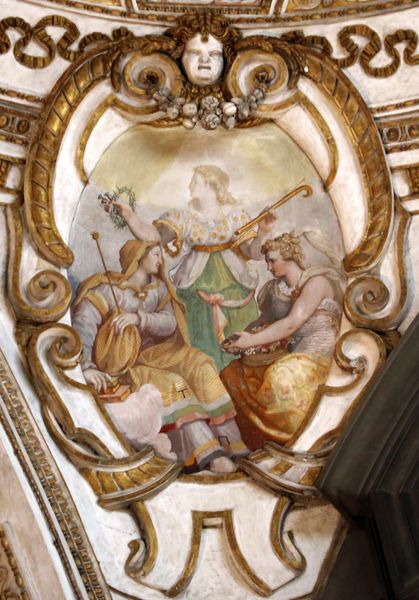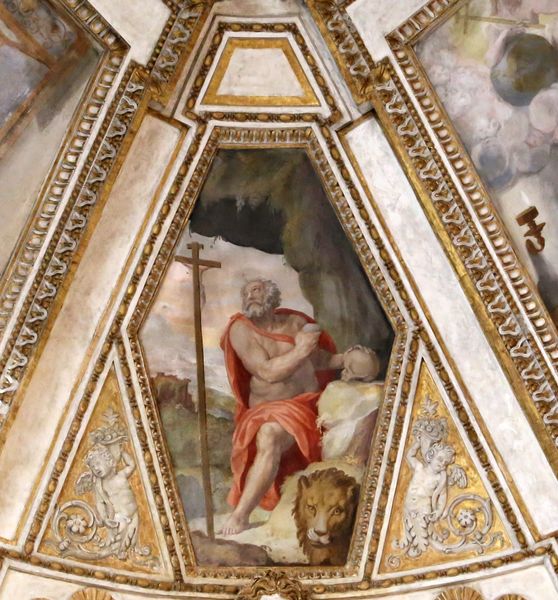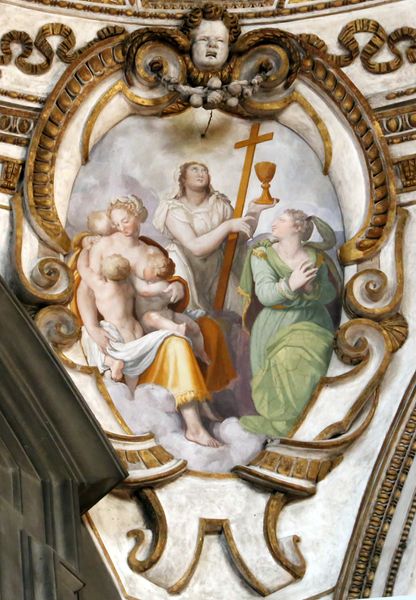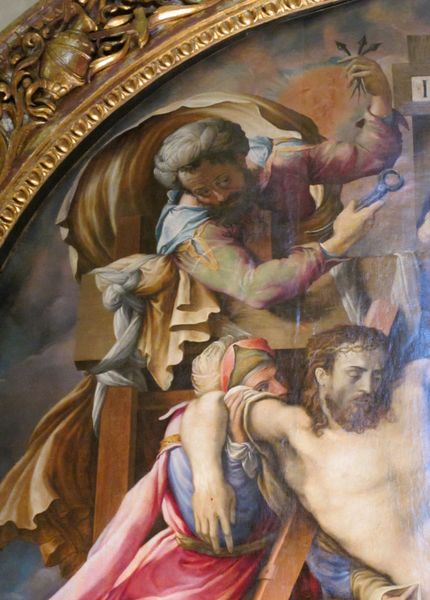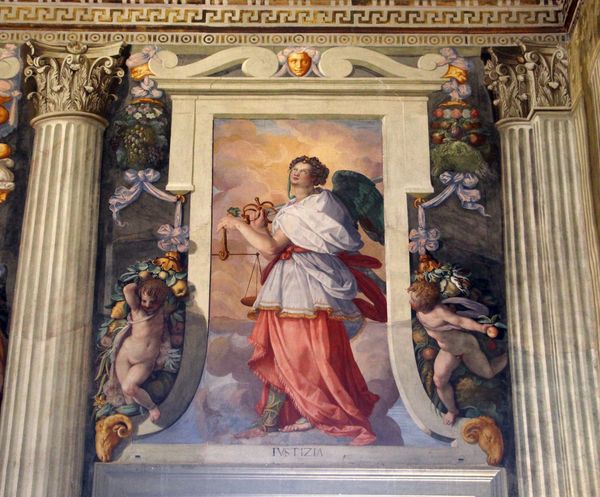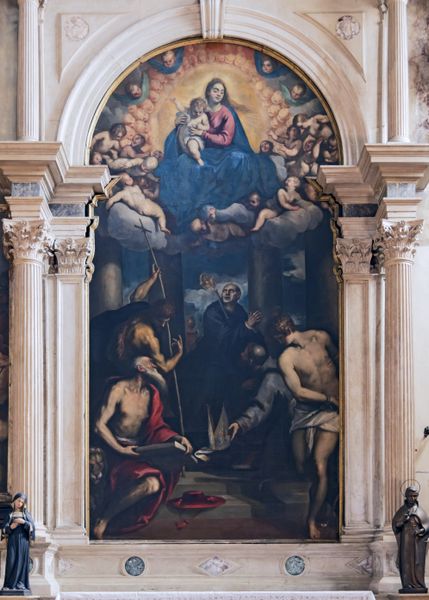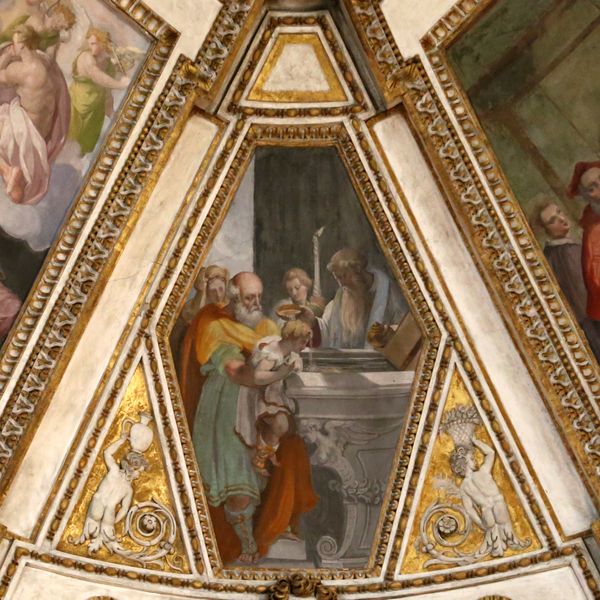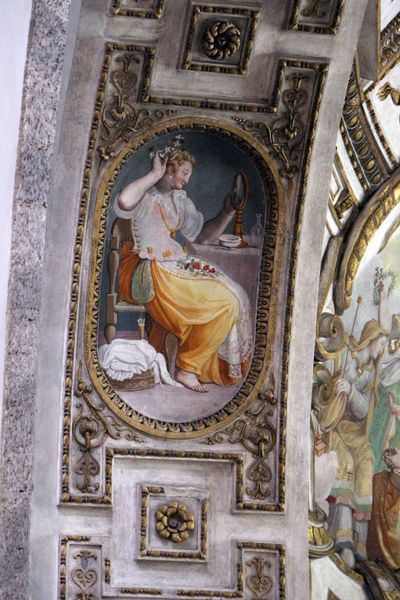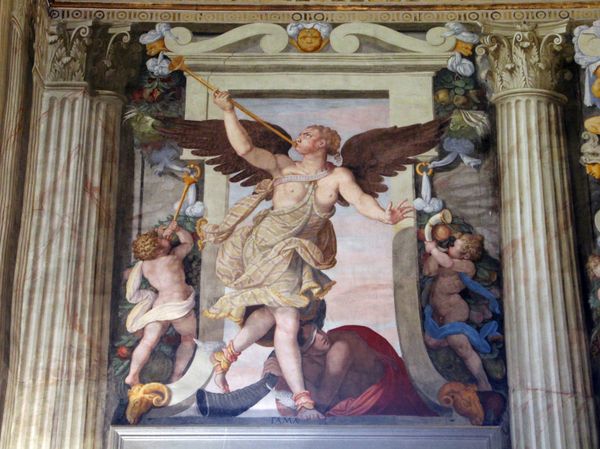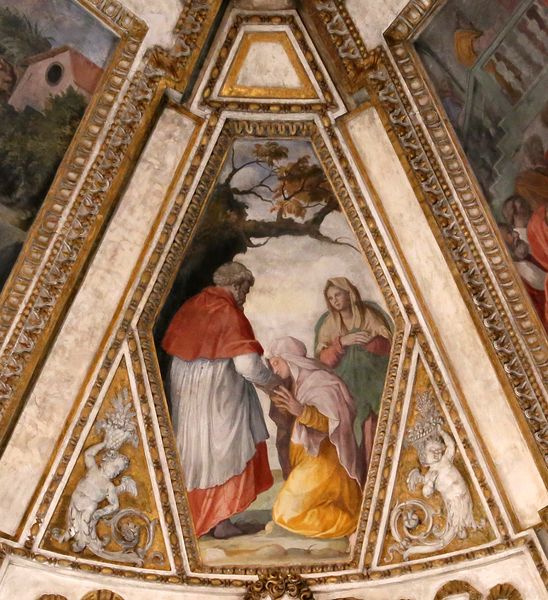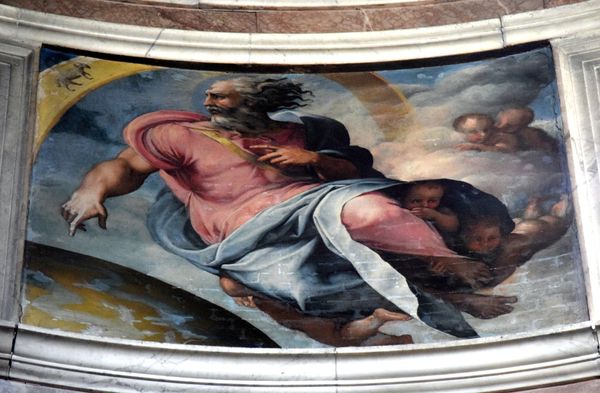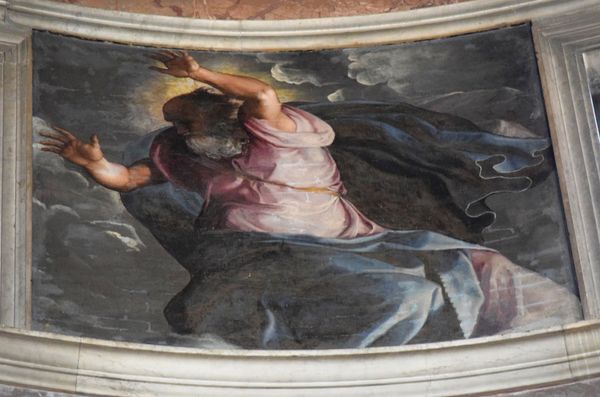
painting, oil-paint
#
portrait
#
narrative-art
#
painting
#
oil-paint
#
mannerism
#
figuration
#
history-painting
Copyright: Public domain
Curator: Oh, I’m immediately struck by how this piece whispers secrets—or perhaps it's the setting here in Santa Maria Novella itself! This painting is titled "Stories of St. Jerome," a work executed in 1577 by Alessandro Allori. Editor: It feels like a faded dream, all soft edges and diffused light. The figures seem caught between worlds, both present and utterly remote. There's something melancholic, almost ghostly, about the palette. Curator: That's Mannerism for you! Allori masterfully utilizes oil paint to create these elongated figures and artificial poses so characteristic of the style. It's fascinating to analyze Mannerism not merely as an aesthetic deviation, but as a reaction to social upheavals during the Reformation, expressing a sense of uncertainty through the destabilization of Renaissance ideals. Editor: Mmm, uncertainty beautifully captured. It feels less like a history lesson and more like eavesdropping on someone's innermost thoughts. Like peering into a psyche made visible with muted colours. Curator: Absolutely. Allori consciously constructs this history painting to explore religious and philosophical complexities, and that reflects broader questions about authority. St. Jerome's story itself – his translation of the Bible, his life as an ascetic – speaks volumes about interpreting text and challenging established norms, an interpretation still so relevant today. Editor: Now you point it out, I see defiance! Not a shout, more of a knowing look and a quirk of a smile as he pens away under the gaze of history. Perhaps it speaks to that idea we touched on about living in liminal spaces, existing but not belonging, is perhaps, a powerful statement itself. Curator: Precisely! Considering Allori's placement of this work in the context of Florentine society, it serves as a subtle reminder of the importance of interpretation, translation, and individual intellectual engagement in a world pressing conformity. It also seems a profound dialogue about art itself! Editor: Beautiful! I see this history and philosophy woven into brushstrokes that are far from dogmatic. More invitation than declaration and that has been utterly transformative. Thank you.
Comments
No comments
Be the first to comment and join the conversation on the ultimate creative platform.
